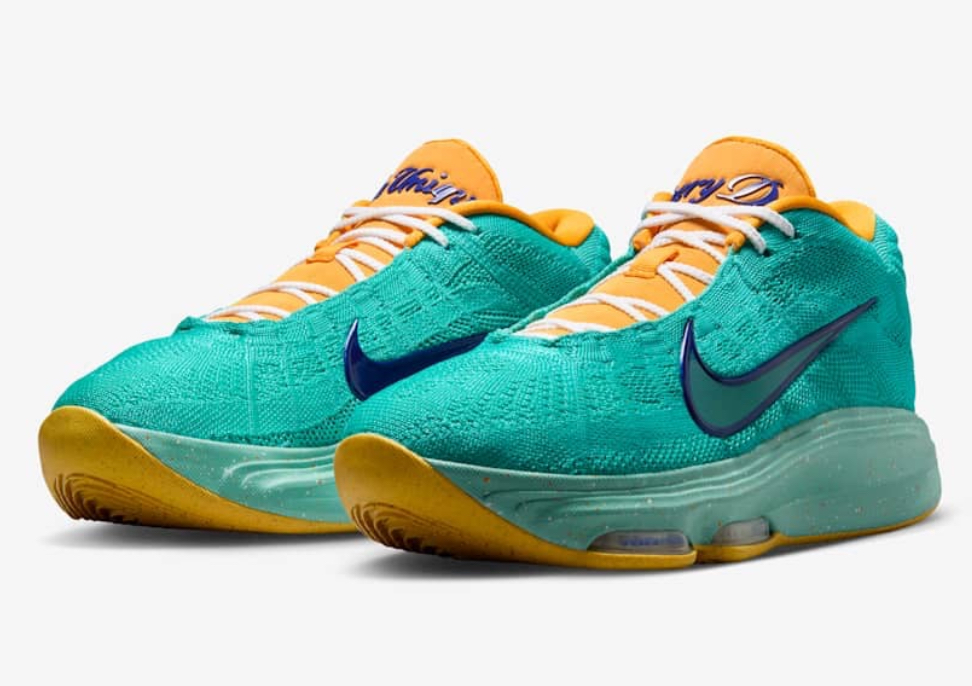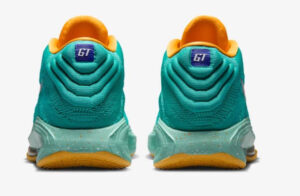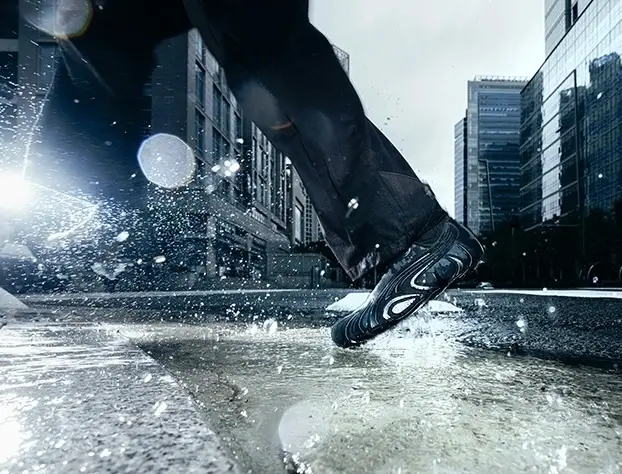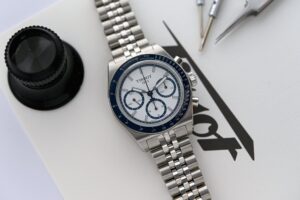Some shoes don’t just respond to a game—they rewrite it. Some athletes don’t just play—they alter gravity. In the G.T. Hustle 3, Nike has engineered more than a performance basketball shoe. It’s an architectural response to Victor Wembanyama’s geometry, a wearable thesis on upward momentum. And in two colorways—Dusty Cactus and Sundial—the shoe becomes not just a vessel for movement, but a symbolic palette for ascension.
Flight Engineered: The Anatomy of the Hustle
The G.T. Hustle 3 is a sneaker designed for the airborne.
It’s not made for players who occupy space. It’s made for those who transcend it.
The shoe’s technical evolution includes:
- Full-length ZoomX foam—borrowed from Nike’s distance-running innovations—allowing maximum energy return in jump phases
- A lightweight textile upper that flexes like breathable armor
- Curved heel geometry, promoting continuous movement from landing to leap
- And a minimalist containment system, engineered for a foot that refuses to stay grounded
It weighs less than its predecessor, grips tighter, and bends more willingly toward aggression. But these specs don’t just serve speed—they support expression. Wembanyama doesn’t move like anyone else. He doesn’t jump—he levitates. He doesn’t pivot—he arcs. The Hustle 3, at its core, is a tool for kinetic poetry.
Dusty Cactus: Desert Bloom in a World of Steel
The Dusty Cactus colorway doesn’t shout—it glows. A gentle seafoam hue, somewhere between dry mint and faded jade, floods the mesh upper. Underneath, subtle off-white tones anchor the silhouette, like sand clinging to stone. A translucent sole completes the illusion of desert light refracted through crystal heat.
Dusty Cactus is not about dominance. It’s about distance. This is the color of things seen across vast horizons—the outline of a figure against sunset sand, a flash of speed before the dust settles.
In this palette, Wembanyama becomes mythic:
- The player as mirage
- The motion as memory
- The game as endless terrain
Dusty Cactus invites you to blur, to move without leaving footprints, to disrupt not with force but finesse.
ISundial: Time Cast in Background and Light
Where Dusty Cactus whispers, Sundial speaks in contrast.
Bronzed golds wrap the forefoot and collar, catching artificial light like solar flares. Deeper amber tones move through the lateral flanks, ending in a heel panel of sun-scorched brown. It’s not metallic—it’s elemental.
If Dusty Cactus is a whisper from the dunes, Sundial is the monument they surround. A relic of time marked in light. It’s the sneaker as artifact, the athlete as sundial, measuring the arc of the ball, the rhythm of transition, the seconds it takes to rotate a universe around one motion.
In Sundial, Wembanyama becomes both the shadow and the source. The moment the clock forgets its numbers and watches instead.
Victor Wembanyama: The Silhouette as Myth
There is no separating this shoe from its muse. Victor Wembanyama doesn’t just wear the G.T. Hustle 3—he extends it. The shoe is a continuation of his geometry:
- 7 feet 4 inches of fluid possibility
- Wingspan stretched across the floor like brushstroke
- Movement not coded for weight class but for probability itself
Watching him play in Hustle 3s is like watching architecture perform ballet. It’s not that the shoe makes him fly—it’s that the shoe dares to keep up.
Wembanyama, draped in Dusty Cactus or anchored in Sundial, doesn’t just market the shoe. He justifies its existence.
Poetics of the Court: Function as Metaphor
Basketball is not just a sport of scores. It is a theater of gesture, of repetition and rupture. And sneakers are not merely gear—they are verbs. They jump, pivot, slide, sing.
In the Hustle 3, we are watching three layers of poetry:
- Material: The way ZoomX compresses and releases like breath
- Color: The way Dusty Cactus and Sundial turn climate into cadence
- Human: The way Wembanyama embodies motion not as action, but as ritual
Nike has not just made a sneaker. It has crafted a symbol system, a way to carry rhythm and reach across court and culture.
The Hustle Aesthetic: Lightness as Discipline
Unlike its heavier siblings in the G.T. line, the Hustle 3 maintains an aesthetic of grace through reduction. The silhouette is curved without bulk. The overlays are stripped to function. The branding—small swoosh, narrow tongue tab—is nearly shy. This is equipment in a state of elegance.
Where the design language of basketball shoes often veers toward armor or spectacle, the Hustle 3 reminds us that greatness can also be quiet. It doesn’t need metallic chrome or exaggerated shanks. It needs efficiency. Precision. Trust in silence.
Dusty Cactus is the whisper.
Sundial is the echo.
The shoe is the pause between.
Cultural Resonance: Sneakers as Myth-Building
In the sneaker world, form follows hype—often at the expense of soul. But the G.T. Hustle 3, especially in these colorways, stands apart. It doesn’t just ride the wave of Wembanyama’s rise—it choreographs it.
On court, fans watch the play.
Off court, they study the silhouette.
On socials, they caption the colorways like poetry.
And in resale forums, they assign Dusty Cactus and Sundial not just value, but aura.
These aren’t shoes. They’re legends in process. Worn by a player who has yet to finish a full chapter. Released by a brand unafraid to design for what doesn’t exist yet.
Impression
The G.T. Hustle 3 is more than a launch. It is a direction. Dusty Cactus and Sundial are not just palettes—they are stances.
- One, ethereal and evasive.
- The other, grounded and glowing.
- Both, stitched to the feet of a 7’4” question no defender can answer.
Wembanyama is the narrative.
The Hustle 3 is the typography.
And these colorways are punctuation—quiet, declarative, irreversible.
In Dusty Cactus, he dissolves into distance.
In Sundial, he casts new time.
And in both, the court becomes not a place, but a page.
No comments yet.









